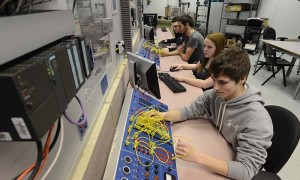The idea of using participatory learning activities is alarming to many trainers for three basic reasons. First, they operate under the mistaken assumption that participatory activities require a great deal of time and money to create and deliver. Second, they fear that they will lose credibility if they move away from expert lectures. Third, they are concerned about losing control over the content and the learners.
It is true that there are costly participatory learning activities on the market that offer lots of bells and whistles. It is also true that are many participant-centered activities that are easy to create, take little time to deliver, and cost next to nothing.
As for losing credibility as the expert who delivers the training, there is nothing farther from the truth. Regardless of the learning activity, it is ultimately the trainer who has the final word.
Although facilitative skill in classroom management is necessary, there is also no reason for trainers to lose control over the content or the learners.
1. Participatory activities can be quick and inexpensive to create and deliver.
Simple participatory learning activities can be very effective. The point of engaging learners is to give them an opportunity to either check their comprehension or practice using what they have learned.
Simple inexpensive activities that check for comprehension and are quick and easy to create and administer include: paper and pencil questionnaires, crossword puzzles, small group brainstorming, a relay race to complete words or phrases on a flip chart, pop ups that involve participants standing to volunteer answers, small group discussion to solve a problem situation, and responding to questions about a visual on the screen.
Simple inexpensive hands on activities that are quick and easy to create and give learners practice using what they have learned include having them: make computations, operate equipment, simulate interpersonal communication situations, and/or demonstrate procedures.
2. The trainer is always the expert, regardless of the learning activity.
The reason that the trainer is in the front of the room is that the trainer has respected expertise in the subject area. The question is when the focus of the training belongs on the trainer and when it belongs on the learners.
If the training content is completely new to the learners, the focus must first be on the expert trainer who can present, explain and demonstrate the content. Then the focus needs to move to the learners as they practice the new content and develop a level of mastery.
However, during learner practice, the trainer remains responsible for coaching, guiding and re-teaching where necessary. At the conclusion of the learner practice, the trainer is also responsible for confirming or correcting the learners’ answers and results. After all, the trainer is the recognized expert.
3. The trainer can maintain control over the content and the learners during participatory activities.
Basic facilitation skills in classroom management that enable the trainer to maintain control include:
a. modeling the desired behavior in an example before the learners work on their own;
b. providing detailed instructions;
c. clarifying the desired end result of the activity;
d. allocating a specific time period for the activity;
e. monitoring the activity;
f. intervening where necessary to clarify instructions or better focus a small group on the desired activity;
g. keeping learners apprised of the amount of time they have remaining to complete the activity;
h. closing down the activity;
i. debriefing the activity by drawing answers or results from one or more work groups; and
j. confirming or correcting group answers or results.
The trainer is actually in control of the activity at all times. The trainer has designed the activity, can guide the learners in the direction they need to go, can stop the activity to clarify and refocus where necessary, and will have the final say regarding the time the activity takes and the learning that occurs.
Participatory learning activities can be inexpensive, quick and easy to design, and result in effective learning that builds learner mastery. When trainers embrace participatory learning activities in lieu of lecture, they still retain expert credibility and content control. The only real difference is that now the learners are doing the work rather than the trainer! Isn’t that the way it should be?










